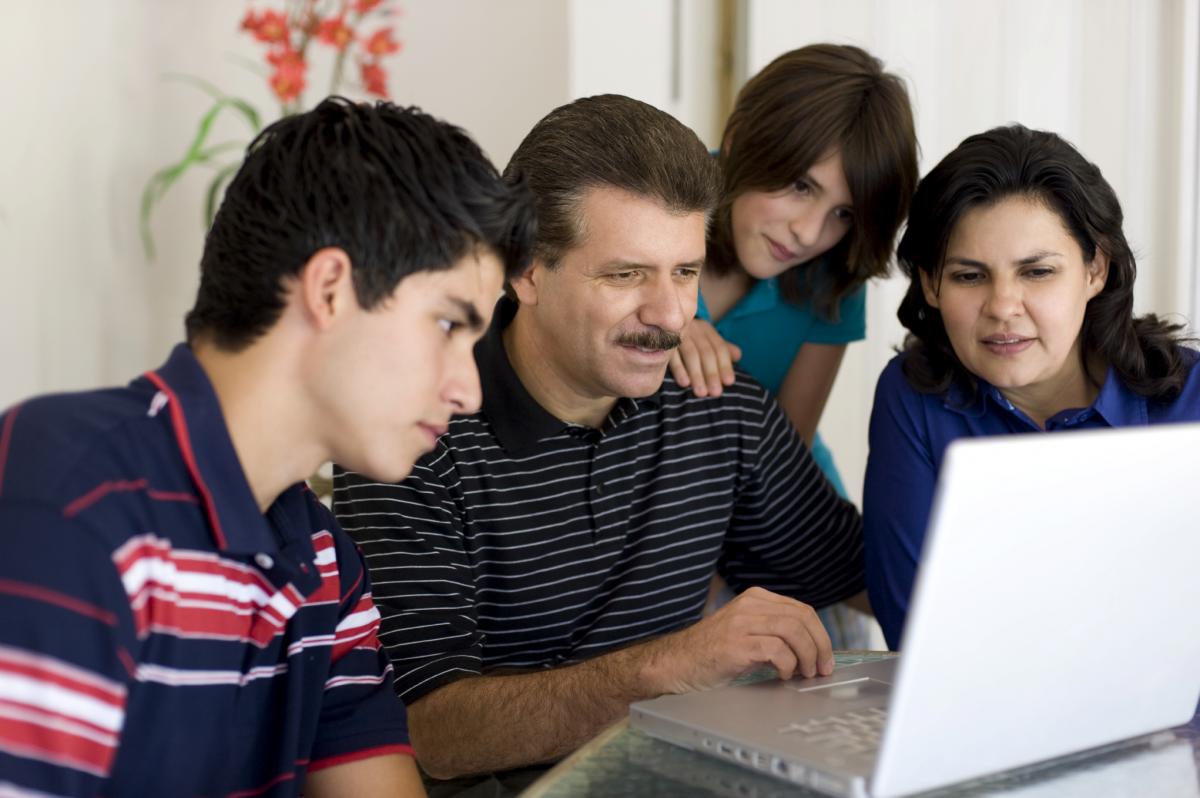By Shari Kessel Schneider
 As parents, many of us feel hopelessly at sea when it comes to understanding our children’s online activities. With the average child spending more than seven hours a day online, we want to be involved in their digital worlds, yet we can barely keep up with the new sites and technologies that our children master so easily. And even if we do log on and learn how a particular social media site works, the task of monitoring our children’s use while still respecting their privacy seems daunting.
As parents, many of us feel hopelessly at sea when it comes to understanding our children’s online activities. With the average child spending more than seven hours a day online, we want to be involved in their digital worlds, yet we can barely keep up with the new sites and technologies that our children master so easily. And even if we do log on and learn how a particular social media site works, the task of monitoring our children’s use while still respecting their privacy seems daunting.
Beyond the challenge of monitoring day-to-day use, for many parents the greater fear lies in worries about our children becoming victims of cyberbullying—bullying that involves the use of electronic technology, which can include hurtful messages, embarrassing photos, or damaging rumors, sent via text or e-mail or posted on a website. Cyberbullying is associated with such mental health problems as depression, self-injury, and, in some especially heart-breaking cases, suicide. About one in six youth reported being a victim of cyberbullying in the past year, and many more youth are exposed to cyberbullying by being involuntary “bystanders” to negative behaviors. And while few of us want to even consider this, our children may also be bullying others online.
We want to protect our children, but how can we do that when we barely have a handle on the technology ourselves?
Teach Digital Citizenship
A primary answer to this struggle is contained in two words: digital citizenship. While setting clear rules and monitoring our children’s use are important, teaching digital citizenship—appropriate and responsible use of the Internet—shows our children how to act safely and responsibly using whatever technology is available, now and in the future.
Teach your child the following rules of digital citizenship:
• Never say anything online that you wouldn’t say to someone in person.
• Remember that what you post online can last a lifetime.
• If someone you know is being bullied online, tell an adult, stand up for the child being bullied, and support the victim by being a good friend both online and offline.
Set Appropriate Rules for Your Family
Every family has its own values, and every child is different. Your children may pressure you to allow them to use social media because they feel socially excluded without it. Keep in mind, though, that children may feel more excluded once they have access to social media and see photos of all the parties they weren’t invited to.
The decision to allow your child to use social media should be made by each family based on its own values and the developmental readiness of the child. Has your child been acting responsibly online, following rules, and demonstrating his or her understanding of digital citizenship? If so, your child may well be ready.
Involve Your Child
Learning how to navigate a new social media site can be intimidating. Some parents react by prohibiting the sites without much knowledge of them, and other parents are too permissive because they feel like it is impossible to keep up.
One of the best ways to become involved in your child’s digital life is to have your child show you the latest sites and how to use them. If you allow your child to use a particular site, make sure to:
• Sign up for your own account so that you can “friend” or “follow” your child.
• See that your child’s privacy settings allow you to view anything your child posts or anything that is posted about your child, and that strangers are not able to access your child’s profile.
• Know your child’s usernames and passwords.
• Monitor your child’s use regularly, make your child aware that you are doing this, and respect your child’s privacy as much as possible.
Be Open to Change
Whatever rules you decide on initially, be open to changing them. Your child may show more maturity and become ready for new privileges online. On the other hand, you may find concerning posts that lead you to restrict your child’s use or up your own monitoring. The important thing to remember is that you can change the rules to do what is best for your child.
Emphasize Core Values
It may seem obvious, but the best way to protect our children is to teach them core values, such as kindness and empathy, and to foster their resilience. By doing this, you will raise a child who is able to protect him- or herself online and to contribute to a positive online community in which bullying is less likely to occur.
A Good Resource to Help You Talk to Your Kids
With all of this advice, it still may be difficult to find the right language to convey to your child your decisions about using social media and the reasoning behind them. Promoteprevent.org’s Preventing Bullying site contains six interactive scenarios that will take you through different situations involving cyberbullying and teaching digital citizenship, allowing you to hear real-life conversations between parents and youth, choose the paths they should take, and find the best outcomes. Start with Allowing Access: Your Child’s Social Media Presence and Digital Watchdogs: Monitoring Your Child’s Online World.
Your Turn
What are your biggest struggles as a parent in trying to protect your child from cyberbullying? What successes have you had when it comes to parenting in the digital age? Please share your comments below.
Add new comment